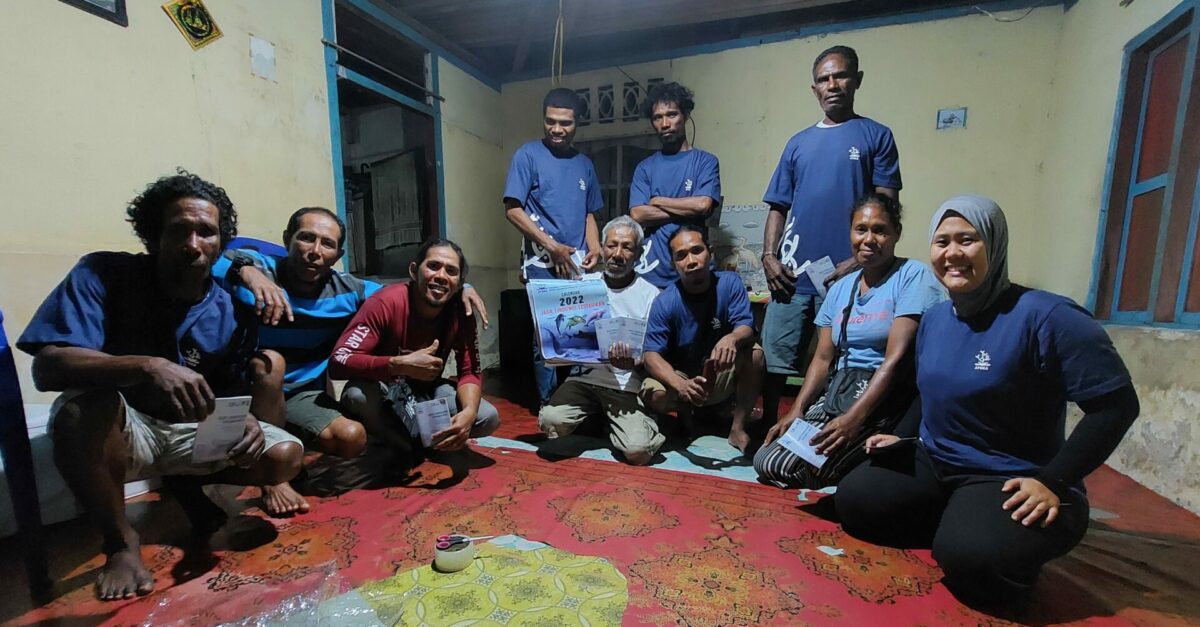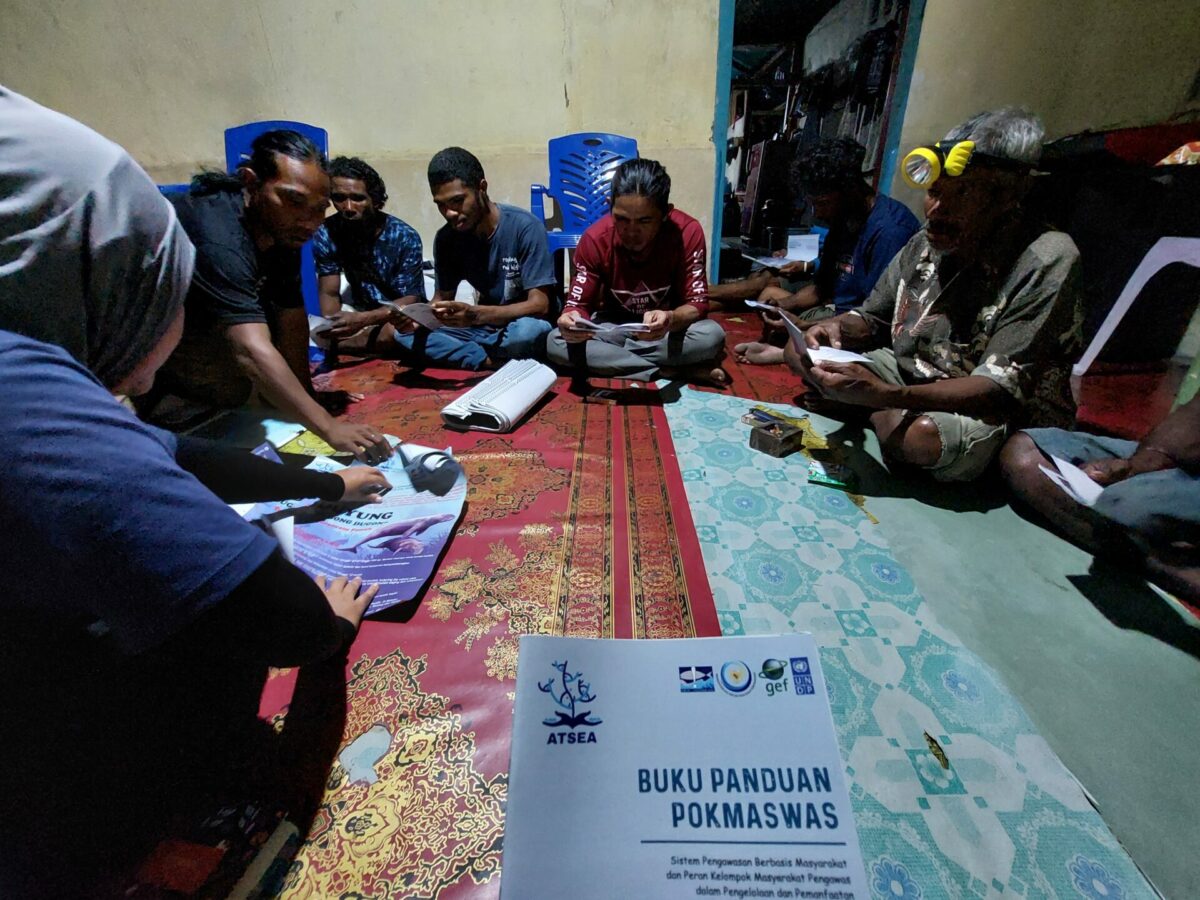With the objective of holding discussion and coordination with the community-based surveillance group (POKMASWAS) named Gwer Ketabar in Apara Village regarding their progress in monitoring the use of Marine Protected Area (MPA) resources, ATSEA-2 Project team met with Muhidin on 29 September 2022. He is one of the fishermen who is also in charge of the POKMASWAS in this village, one of the closest villages to the Southeast Aru MPA in the Aru Islands. Electricity has not yet reached the village of Apara – most of the community uses fuel-based generators for lighting at night, and many others, like Muhidin, still rely on petromax paraffin lamps. Apara itself is part of South-central Aru District, one of the outermost villages and the farthest from the district capital Dobo (200-km journey takes approximately 5 hours in a twin-engine 40 PK fibre boat.
POKMASWAS Gwer Katabar is one of the two POKMASWAS formed by the ATSEA-2 Project together with Destructive Fishing Watch Indonesia (DFW Indonesia). Besides wanting to know and discuss directly with POKMASWAS, this journey has brought ATSEA-2 Project team to identify areas for improvement, including members’ capacity and equipment monitoring, such as logbooks and educational posters.

Muhidin asked the team to head over to his brother’s house which has brighter lamps because of the electricity generator, while calling other POKMASWAS’ members to join in the group. He successfully gathered seven out of ten members engaged actively in the discussion that evening.
Representing the ATSEA-2 Project, Sila Kartika Sari, Indonesia Field Facilitator for Aru Archipelago, kicked off the discussion with a refresher regarding the role and functions of POKMASWAS. As a community-based monitoring system for marine and fisheries resources at the field level, POKMASWAS assists the government in efforts to raise awareness of marine conservation regulations by applying the principles of seeing/hearing, recording, and reporting.
Its members are made up of community, religious, or customary leaders, fishermen and members of fish farming communities. In this case the location being monitored is the Southeast Aru MPA, where all of the members work as fishermen. As direct sea users who work on the ocean almost every day, POKMASWAS have become the ‘eyes’ of the government, monitoring the protected area and helping to implement and socialise relevant regulations (area zoning, protected species, etc.). In addition, they are tasked with reporting violations that occur in the utilisation of marine resources and fisheries, such as the use of illegal tools (like explosives) and instances of fishing inside the core/no-take zone.

The ATSEA-2 Project has created a logbook for recording violations, which also contains guidelines for monitoring implementation, MPA zonation maps, lists of the various protected species in Indonesia, prohibited activities for surveillance, and other safety information. Surveillance results can be forwarded to law enforcement officials including The Directorate General of Marine and Fisheries Resources Surveillance (Direktorat Jenderal Pengawasan Sumber Daya Kelautan dan Perikanan – PSDKP), Ministry of Marine Affairs and Fisheries (MMAF), Non-Commission Law Enforcement Team (Bintara Pembina Desa/Babinsa) and equivalent organisations, along with the police and the Indonesian Navy and non-law enforcement officers (like village/sub-district heads and port heads).
POKMASWAS Gwer Katabar is currently in the early stages of conducting independent surveillance, so members feel they need more help to make sure the logbook is completed correctly. This support also includes simulations of patrols and support in reporting violations.
In addition, members of the group identified funding as being crucial to their operations, especially considering that independent surveillance requires fuel (± 10 litres) for each trip. Moreover, they expressed a need for sea turtle live release training, so they can help the animals that sometimes become entangled in fishermen’s nets (encounters with marine turtles are relatively common in these waters).
These two issues will be treated as a matter of priority in 2023 by the ATSEA-2 Project, which will continue to open channels of dialogue and devise solutions for the issues raised thus far. This will include sustainable funding and financial support schemes for POKMASWAS Gwer Katabar operations, along with training activities for the release of live sea turtles, and joint surveillance with MMAF and Aru Fisheries Agency.
At the end of the meeting, we decided to put up educational posters about protected species, such as dugongs and sea turtles, at several strategic locations in the village where they can be viewed by the public (e.g., public meeting points and local stalls, or warung). That night, members posted this information around the village, while also helping to explain their content to at least 10-15 residents who had gathered to socialise. This process continued the next day, as POKMASWAS members visited other locations in Apara village.
The ATSEA-2 Project is working to improve MPA effectiveness – in this case Southeast Aru MPA – by supporting monitoring activities, developing alternative livelihood opportunities for local communities and integrating local traditional wisdom into fisheries and marine management governance. The establishment of the POKMASWAS by the ATSEA-2 Project is helping to facilitate greater community involvement, by engaging those who benefit from marine resources in surveillance efforts that support their protection.
By Sila Kartika Sari


